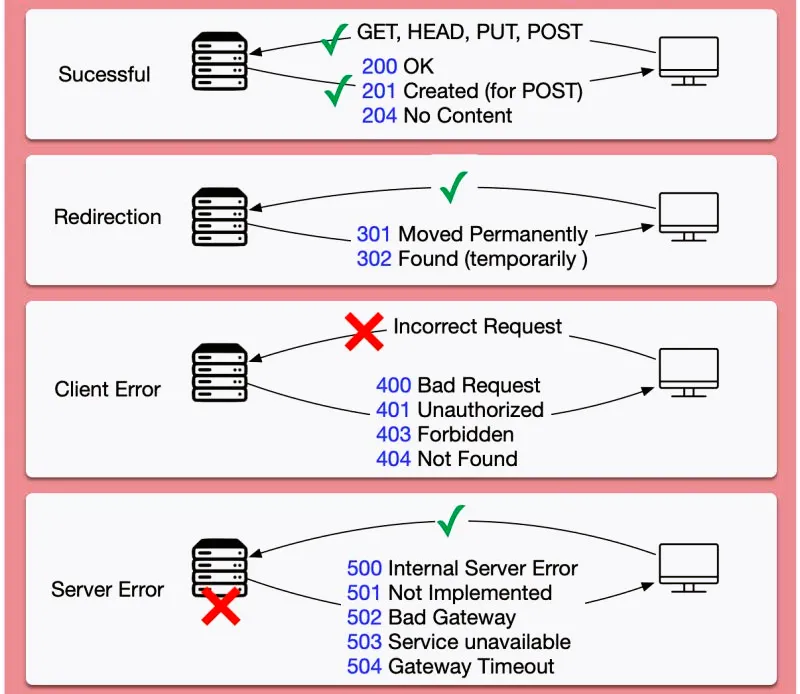HTTP Status Codes

HTTP Status Codes What are the most common HTTP status codes? HTTP status codes are essential in understanding the response returned by a server after making an HTTP request. They provide information about the status of the request and response from the server. 🎯HTTP response codes are categorized into five groups: Informational (100-199) Success (200-299) Redirection (300-399) Client Error (400-499) Server Error (500-599) 🎯Here are some of the most common HTTP status codes: 200 OK: This status code indicates that the request was successful. 404 Not Found: This status code indicates that the requested resource could not be found on the server. 500 Internal Server Error: This status code indicates that there was an error on the server that prevented the request from being fulfilled. 401 Unauthorized: This status code indicates that the client is not authorized to access the requested resource. 403 Forbidden: This status code indicates that the client does not have pe